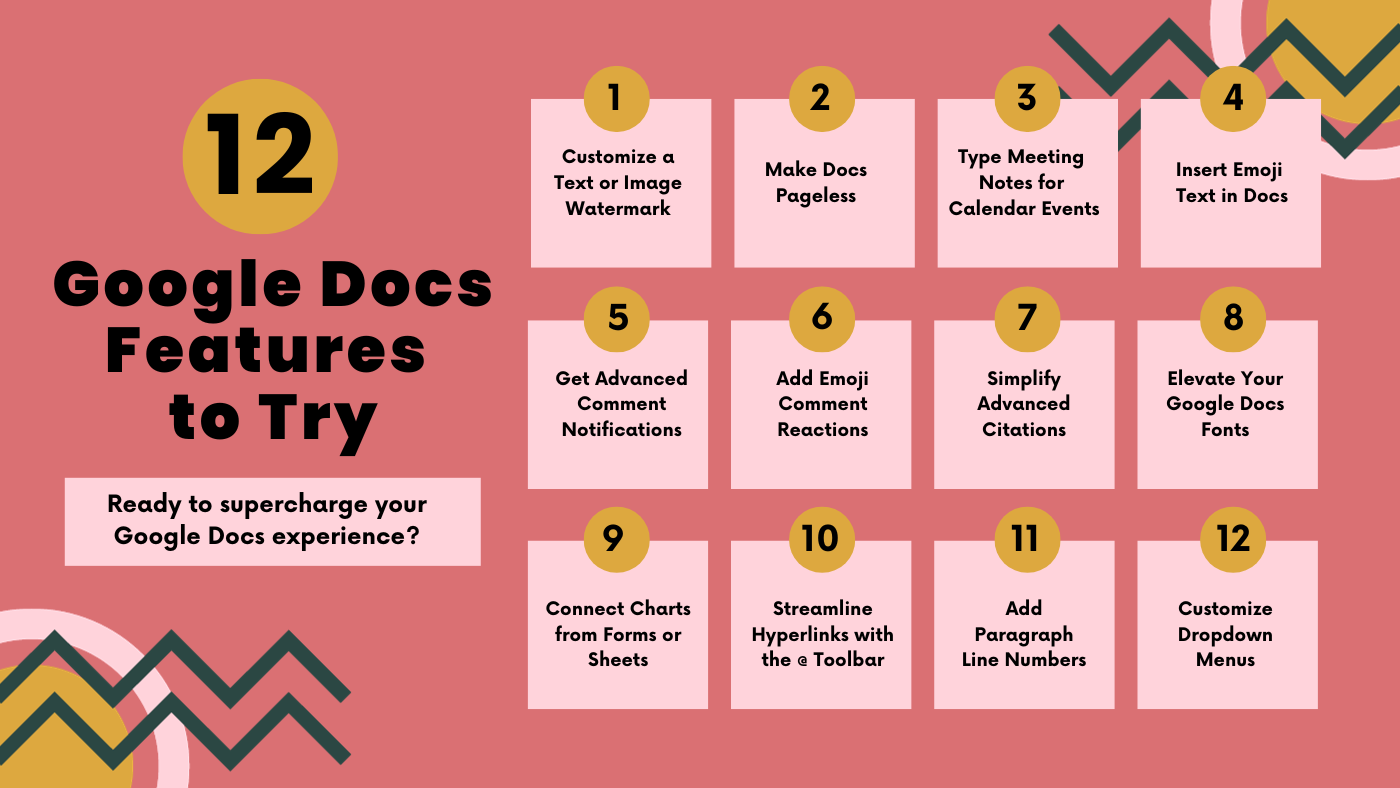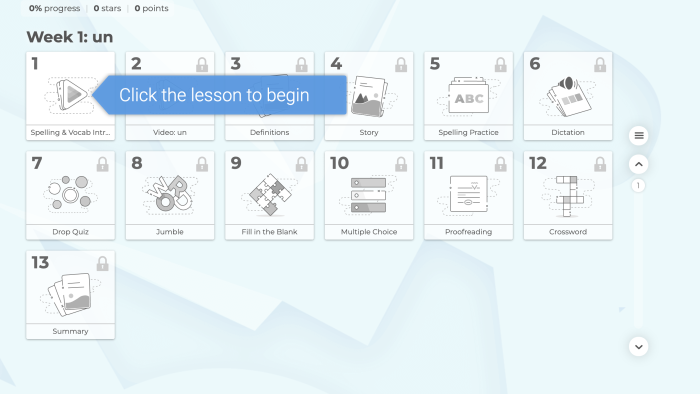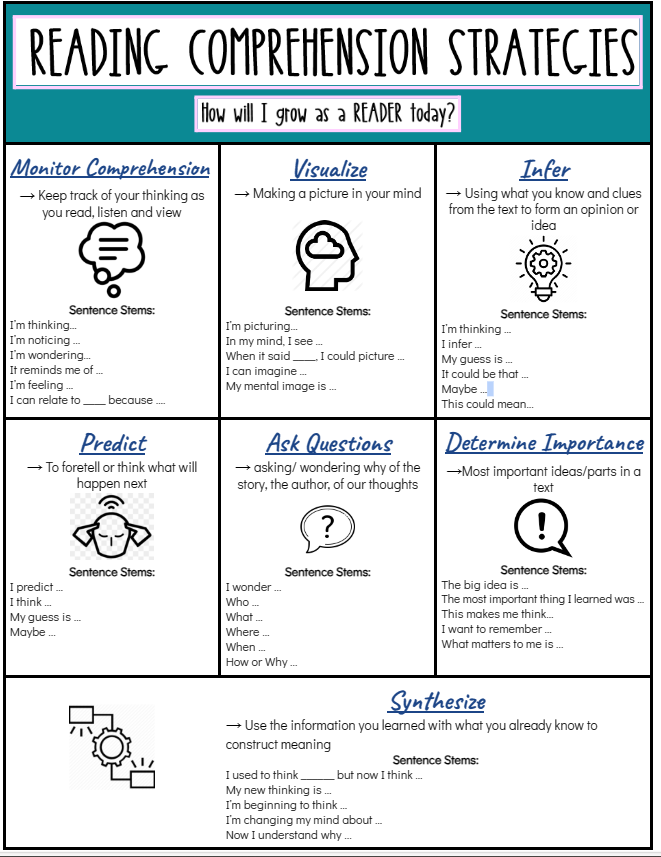Home » Posts tagged 'Technology Integration' (Page 2)
Tag Archives: Technology Integration
Innovative Tools to Make Learning Better
In this blog post I am going to be overlooking seven tools that could be useful in the classroom. The first tool that I am going to be discussing is called Google Classroom. With this tool, teachers are able to start video meetings, create classrooms where they can upload and grade assignments, post announcements, etc. Everything that teachers do in an everyday classroom, they are now able to do virtually from anywhere with the help of Google Classroom. Students are able to check assignments and they due dates as well as any feedback from their teacher. Overall, it takes all the most important elements of a classroom and makes it virtual, making it more organized and accessible to students.

The next tool that I will be discussing is called Google Docs. This is an application built into Google where you can create documents. This tool itself also has features built into it to make it easier to use. It comes with templates so you can just edit your information into an already built format. Its other features include typing with your voice, grammar check, keyboard shortcuts, using a braille display, customization, etc. It allows users to make any document their own and have features to accommodate everyone, optimizing how many educators are able to use it in their classrooms.

The third tool I will be reviewing is called VoiceOver. This tool was designed to make learning and reading easier for blind students. It can also be used to help students who learn better audibly rather than visually by reading. When using this tool, you are able to select the level of speech you prefer including speech, braille, text, announcements, and hints, all ranging from low, medium, and high. You will be able to choose the verbosity (how wordy you would like the voice over to be). In addition, you are able to select from two female voices and two male voices, as well as a customizable voice, truly accommodating everyone. Another feature called navigation allows you to use this voice over feature across the web and for any website of your choosing.

The next tool is National Geographic Kids. This tool provides games and multimedia to engage students in learning about animals, habitats, countries, and cultures. Students can explore this website and research different topics through magazines and other forms of media. There are also closed captions to make the resources more accessible to all students.

Another tool educators can use to make learning better is EdClub. This is a learning tool for students to learn typing, vocabulary, and spelling. It combines learning with games, which could engage more students as many of them would prefer learning through games rather than through worksheets and other typical learning techniques. Teachers are able to create customizable lessons through this application to create a lesson that best suits their classroom.

Google Meet is another great tool to incorporate technology into classrooms. With this application, teachers can host virtual meetings and teach through that. This was a big application used during COVID. Teachers can even screen share, put students into break out rooms for group assignments, students can share comments, etc. Educators can also use this to create a google meet with any special guest they want to talk to their class.

Pear Deck is an interactive slide show that presents students with information and asks them questions along the lesson to make sure that students are paying attention and understand the material given. Teachers can customize lessons with this as well as customizable learning checks. Educators can also upload their existing lessons and combine it with the tools in pear deck.

The last useful tool you can incorporate into your classroom is called Google Calendar. With this you can schedule when assignments are due and have it remind your students. You can also color code different reminders so you can better organize what needs to be done. This can be used with google classroom to send out reminders to your students as to when assignments are due and special events you want them to remember.

Empowering Students Through Innovative Accessibility Tools
In the dynamic landscape of education, accessibility tools play a pivotal role in ensuring that every student, irrespective of their physical or cognitive abilities, has equal access to learning opportunities. Let’s explore four groundbreaking tools that are redefining inclusivity in educational environments.
Rocketbook Beacons: Imagine transforming any whiteboard into a smartboard with ease. Rocketbook Beacons do just that. By integrating with popular cloud services through the Rocketbook app, these Beacons enable traditional whiteboards to become digital collaboration tools. This is a game-changer for note-taking and retaining information presented in classrooms. Students who might struggle with manual note-taking can now digitally capture, store, and revisit classroom discussions, ensuring no critical piece of information is missed.

Dragon Naturally Speaking: In the realm of assistive technology, voice-driven programs like Dragon Naturally Speaking stand out for their ability to empower students in creating, formatting, and editing documents simply by speaking. This tool is particularly valuable for students who face challenges in typing or writing, including those with physical disabilities or dysgraphia. It fosters a sense of independence and creativity, allowing students to articulate their thoughts fluidly and efficiently.

JAWS (Job Access With Speech): For students with vision impairments, JAWS offers a gateway to the digital world. This screen reader is crafted to enable users whose vision loss prevents them from seeing screen content or navigating with a mouse. By reading aloud the text on the screen, JAWS not only helps in accessing information but also in performing various computer tasks, making digital learning spaces accessible to all students.
These tools exemplify the strides being made in educational technology to create inclusive and empowering learning environments. By embracing these innovations, educational institutions can ensure that every student has the tools they need to succeed and thrive in their academic pursuits.
( Grammar and Flaws checked and recorrected by ChatGPT 3.5 and Grammarly )
Reading Comprehension Hyperdoc
I browsed through different hyperdocs on X, and I found one made by an educator. She made five different hyperdocs, but I chose the one made to help reading comprehension. This hyperdoc provided reading comprehension strategies for teachers to give to their students. It has different steps that students can use to optimize their understanding of readings.

This is a very basic but informative hyperdoc. My past teachers have not used this hyperdoc exactly, but they used very similar ones to help my class and I with our understandings of readings. I remember having to follow each and every one of these steps and can affirm that if followed correctly, this helps with students’ reading comprehension. This makes sense because these steps force you to sit there and deeply think about the material instead of reading something and moving on without any thought. It properly separates and describes each step which may be helpful to other educators who cannot easily verbalize the steps for their students. I sometimes struggle with describing things step-by-step for other people so I know that I would definitely use this in my classroom as it is very easy to follow. The creator of this hyperdoc has four other ones for visualizing, inferring, predicting, and for monitoring comprehension. All five hyperdocs go together to really make students think about the information given to them and strengthening their critical thinking skills.

Reading comprehension may be more difficult to deal with because most of the work is up to the students. Resources and hyperdocs such as this one make it easier for educators to relay the skills onto their students, bettering education for the future. Bettering education is one step closer to bettering other world issues because change starts with our younger generations in the classroom. They are our future, and it is up to us to provide them with all skills necessary to succeed.
Hyperdocs: Click and Read

There are many ways Hyperdocs can be incorporated into a teacher’s lesson, but when you see an underlined blue text, you are most likely supposed to click on it. Hyperdocs are interactive applications, links, or sharing resources for students to use to navigate the internet easier. A link or Hyperdoc is an easier way for students to learn and surf the internet safely. They are specific links that lead the students to exactly what they need to be looking at, and clicking and reading makes learning easier.
Below is a video about what Hyperdocs are and how they can be utilized in education. In this video, there are also details about what a Hyperdoc can be, and they mention that it can be many things.
Hyperdocs are very popular for teachers to use in a lesson or PowerPoint and it is a very convenient way for students to be on the right track with their individual learning. It is an effective way of making sure the students are engaged in the lesson and students are also able to work on their own. It is important that teachers provide students with a lot of resources and Hyperdocs can be a great way to share resources with the students.
Thank you for reading!
Online Translation
Breaking Language Barriers
Computers have come a long way overtime and with advancements in technology came advancements in communication. With the help of computers and other electronic devices people all over the world are able to freely communicate with each other without the worry of a language barrier, because of applications like Microsoft Translator people all over the world can understand each other.

Benefits of Translation Applications
- No need for human translators
- Easily accessible translations
- Ideas from people all over can be spread and understood

Translator applications are the future of communicating with one another. By utilizing these applications the language barriers people have all over the world will never be a problem again. Ideas can be spread and understood by all without a human being having to rewrite and article or have a translator speak along with someone in order for them to understand what is going on. Translator applications are the future and the future is all that awaits us.
Childhood Education International Review
I chose Global Schools First – Childhood Education International because it is a resource for global education in grades k-8. I never really heard about this tool and decided that it would be good to learn about a new tool. This tool focuses on diversifying schools and implementing it into clubs, the learning curriculum, the school culture, etc.

One of their main focuses is sustainable learning. Sustainable learning “refers to educational practices that contribute to a continually evolving, healthy learning ecosystem in which knowledge is co-created and shared in a community.” This is especially important to me because my goal for my global goals project is quality education. Sustainable learning is one of the steps towards improving quality education because it works towards bettering education for everyone.
This tool also has a section in their website dedicated to courses. The main purpose of these courses is to help educators better their way of teaching and look at their students through a new light. Some of their free courses include “Webinars & Workshops Archive,” “Understanding the Impact of Trauma on Early Childhood,” “Integrating Social and Emotional Learning,” etc. There are a variety of courses that focus on very different topics, maximizing the number of skills that teachers can acquire. In addition, this is a global tool so there are courses in many different languages, improving quality education worldwide.
Computer use for schools
By Michael Tardi in Uncategorized on September 18, 2023.
Computer use over the years
Computer usage in the class environments have greatly increased over the years. Computers are the future and will help students and teachers alike by using them. But first and foremost computers need to be seen in the hands of students at school.
- 2019-2020 45% of schools had computers for it students
- 37% of schools had computers for each grade and classroom
- 39% of computers stay in there designated locations
- 1/3 of computers given to students are carried around with them

Inequities in computer use
During the pandemic poorer students were affected the most and the inequities were greatly highlighted by it.
- Two-thirds of Americans own smartphones
- Only 61% of homes have high-speed internet on average
- Six in 10 schools with high levels in poverty passed out electronic devices to those who needed them
- During the pandemic schools distributed computers to those who didn’t have them
- 31% of teachers said that their students’ lack of access to devices and high-speed internet interfered with instruction.

Importance of computers in schools
Computer use in schools is of great importance. Not only can students learn through them if another problem like the pandemic happens. But they can access all kinds of information as well. They can research topic through articles on the internet and learn and understand more about a topic. Everyone needs access to a computer whether it be given by the schools or purchased personally.
The Exciting New World of AI
By suazorog September 18, 2023
The education world has been introduced to the use of generative AI tools in the classrooms and has been the center of conversation for educators for the past months. Many are uncertain whether the use of generative AI is a burden in education or an exciting new tool for students and teachers to use. As technology continues to develop, AI will continue to grow, and is necessary to understand how this technology may benefit classrooms.
Classroom Advantages with AI
- Creating interactive and mentally stimulating lesson plans and activities.
- AI can help teachers and students stay up to date with the latest topics that can contribute to the class.
- Reduces workload of teachers and educators allowing, more focus on the students and their needs
The benefits of AI to students
With AI we are able to provide more support to the students individually.
- Personalize learning by tailoring it to the student’s needs.
- Providing immediate feedback to the student, offering guidance.
- The creation of programs that will help further the learning experience of the students while mentally stimulating them.

In conclusion
Education is constantly changing and as educators, it is our duty to adapt to these changes to further the learning experience and growth of the students who are also adapting to the new world of technology as well. It is exciting to see how far AI can take us.
Podcasts in the Classroom
As the use of podcasts has become more popular, integrating the listening of a podcast into a class lesson could be extremely beneficial. Some students share that by listening to the audio and following along with the words actually keeps them engages, reducing the amount of zoning out. Additionally, podcasts aid in learning language through listening comprehension, which is a key component to a child “decoding” a conversation.

Benefits of Using a Web Filter for Digital Learning
When reading this article from Twitter, I found out a lot of really interesting facts. From the title, I thought I would just read out how using a filter on the web prevents students from seeing unnecessary and inappropriate things and how that is important in school settings. While that is true, that wasn’t all I found. Bixler pointed out six benefits of using web filter software to the classroom in grades K-12.
First, she pointed out the obvious (to me anyway!) that it keeps students safe. Being on computers during school is necessary, but schools can block websites and add block lists to their filters to ensure students don’t see things they shouldn’t.
The second benefit is helping students stay focused. She made a point of addressing how easily it is to get distracted online and it’s something everyone does. Schools can block websites of distracting websites so students can stay on track.

The next benefit is something I wasn’t expecting to see. Using a web filter can help students with mental wellness support so they can learn. Alerts can be sent to the school and the parents about students mental wellness. If they are researching something that seems off it will send an alert to help the student. I think this is a wonderful filter to have in place.
The fourth benefit is allowing learners to explore without their privacy or devices being compromised. Web filtering stops malware attacks. Malware is things like viruses or spyware that try to compromise your identity. So with web filters you can feel safe.
The next benefit is that it supports digital citizenship practice. Sometimes a student may come across a website that is blocked. The teacher can have the opportunity to view the site and decide if it’s school appropriate and then unblock it. It save the IT department and the school time and then it gives the student some accountability towards making decision.
The last benefit Bixler pointed out was that web filters help students work remotely without learning being disrupted. Web filters working in and out of schools ensure that school work can be done anywhere. Not all filters are created the same so be sure to check what your filter will and will not allow.